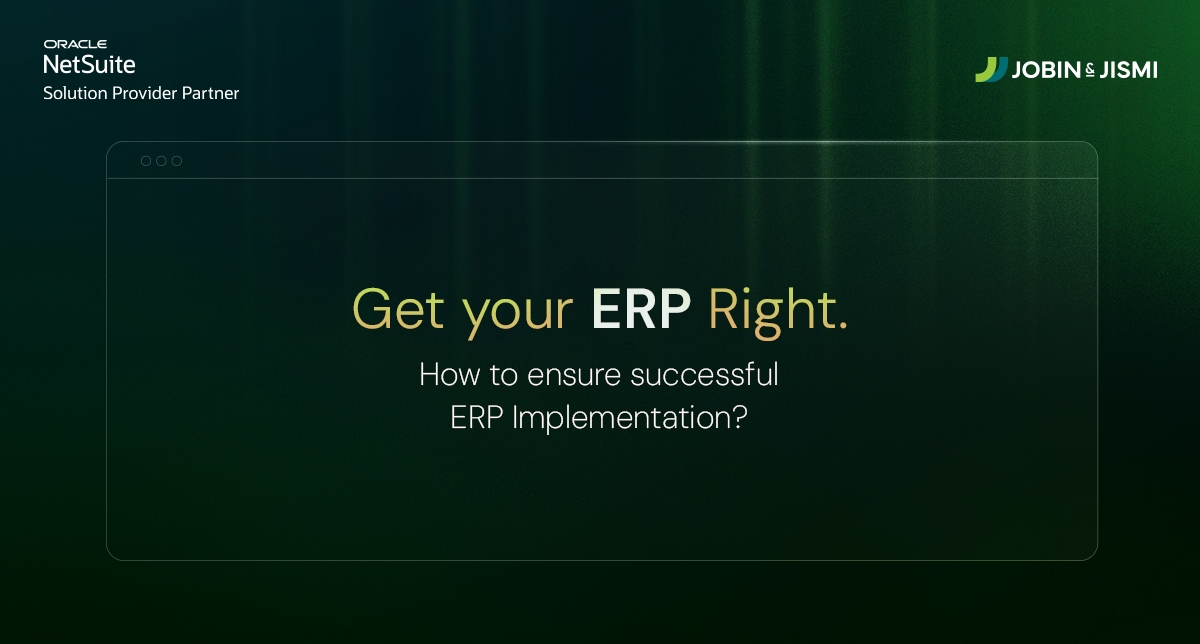Why Cloud ERP Implementations Fail, and How to Ensure a Successful Implementation

Introduction: The Cloud ERP Reality Check
A study by Gartner points out that many ERP projects struggle to meet their goals. This happens because companies focus on the technology itself rather than how it fits their business processes and people. The move to the cloud offers real advantages, lower costs, easier scalability, and stronger integration, but it also brings challenges that need careful planning and leadership.
When those challenges aren’t addressed, the fallout is easy to see. Budgets can run three to even four times over. Operations stumble, staff lose confidence, and leadership is left wondering whether the investment was worth it.
This article looks at why so many ERP projects fail, and what organizations can do differently to make them succeed.
Top Reason Why Cloud ERPs Fail
a. Poor Business-Technology Alignment
When IT teams choose ERP without input from business users, the fit is usually wrong. Important workflows get missed. The system stops matching how people actually do their job. This gap creates frustration, and over time, the adoption rate fails.
Outcome: misaligned priorities, wasted investment, and low user trust.
b. Inadequate Change Management
ERP brings more than a software shift, it changes daily routines. When communication is weak and the leadership is invisible, staff resist. They stay with familiar processes, adoption drops, and the project may never reach its goals.
Outcome: slow adoption, frustrated staff, and lost ROI.
c. Insufficient Data Migration Planning
Most people don’t give data migration the attention it deserves. Migrating data from the old system, which is usually broken, incomplete, and inconsistent, can lead to errors in the ERP if the information is not migrated properly. People go back to spreadsheets and manual fixes, defeating the purpose of ERP.
Outcome: delays, costly fixes, and unreliable reporting.
d. Unrealistic Timelines and Budgets
ERP projects are complicated. Still, some companies set deadlines that leave little breathing room. Planning is trimmed, testing is rushed. Sooner or later, the scope starts to creep. Milestones slip. Costs keep rising until the budget is blown.
Outcome: higher costs, delayed timelines, and compromised quality.
e. Over-Customization vs. Standardization
Copying every feature of the old system into the new ERP only adds complexity. Excessive customization drives up the costs and complicates future upgrades. Cloud updates can break custom changes and force teams to make urgent fixes.
Outcome: fragile systems, expensive maintenance, and reduced upgrade capability.
f. Inadequate Testing and Quality Assurance
When deadlines loom, the first thing to get cut is usually testing. What people don’t realize is that mistakes that can be caught during testing show up during live operations. At that time, the cost to fix can be several times higher.
Outcome: system instability, disrupted operations, and higher post-launch costs.
g. Lack of Experienced Resources and Leadership
ERP projects depend on strong leadership and a team that understands the work. Progress slows when roles are unclear or when staff are pulled between daily duties and project tasks. Decisions lag, milestones slip, and the scope soon becomes hard to track.
Outcome: missed deadlines, unclear scope, and poor decision-making.
How To Ensure Successful ERP Implementation
1. Strategic Foundation
Define Clear Business Objectives
Make sure the ERP system supports the business outcomes you're aiming for. Bring key stakeholders and departments into one room to agree on measurable targets and distinguish essentials from extras.
Secure Executive Sponsorship
Every successful ERP project has a sponsor at the top. Assign a C-Suite leader to own the initiative, create a steering committee that cuts across departments, and set a budget for contingencies. And most importantly, people see the leadership throughout the rollout.
2. Implementation Excellence
Data Strategy and Migration
Start with a complete audit of the existing data. Clean and standardize the records, drop anything obsolete, and test the migrations more than once before go-live. Catching issues during testing is far easier than during live operations.
Cloud-Specific Best Practices
Whenever possible, stick with standard configurations instead of recreating old processes. Plan for automatic updates, check that integrations are secure, and confirm compliance requirements early.
Change Management and Training
Clear communication sets the stage for a successful rollout. Make sure the plan is shared across every level of the organization. Offer training for each role, keep help available after launch, and use feedback to boost adoption.
Testing and Quality Assurance
Testing should start early. Automate the routine checks and run end-to-end processes long before the go-live date. Add a mock go-live so any hidden issues show up early, when they're easy to fix.
3. Risk Mitigation Strategies
Vendor Selection and Management
Pick a vendor who has actually delivered ERP projects in a company like yours. Check references with companies of similar size to see how the vendor performed. Put clear service agreements in writing, and decide in advance how serious issues will be escalated.
Project Management Excellence
A good project manager can make or break an ERP rollout. Pick someone who has led ERP work before. Use a method that's been tested and leave some breathing room in the schedule for unexpected issues. Have senior leaders review progress regularly to catch small problems before they grow.
4. Success Metrics and Long-Term Considerations
Key Performance Indicators
Watch how quickly the system delivers value. Track adoption across teams, improvements in efficiency, and overall uptime. Together, these figures indicate whether the ERP is working as planned.
Post-Implementation Success
The real work starts after launch. Continue fine-tuning processes, schedule system reviews, and update training. Keep an upgrade plan in place so the ERP stays relevant as the business expands.
Conclusion
Cloud ERP is not just a software project. It changes how finance, operations, and teams work together. Weak planning, poor leadership, and unrealistic expectations sink many ERP projects. The ones that thrive set clear goals, keep leadership involved, and continue to refine the system after go-live.
Planning a new ERP or trying to steady one in progress? It helps to bring experienced NetSuite implementation partners early. Their guidance can head off common problems and keep the system running well for years.
on LinkedIn



